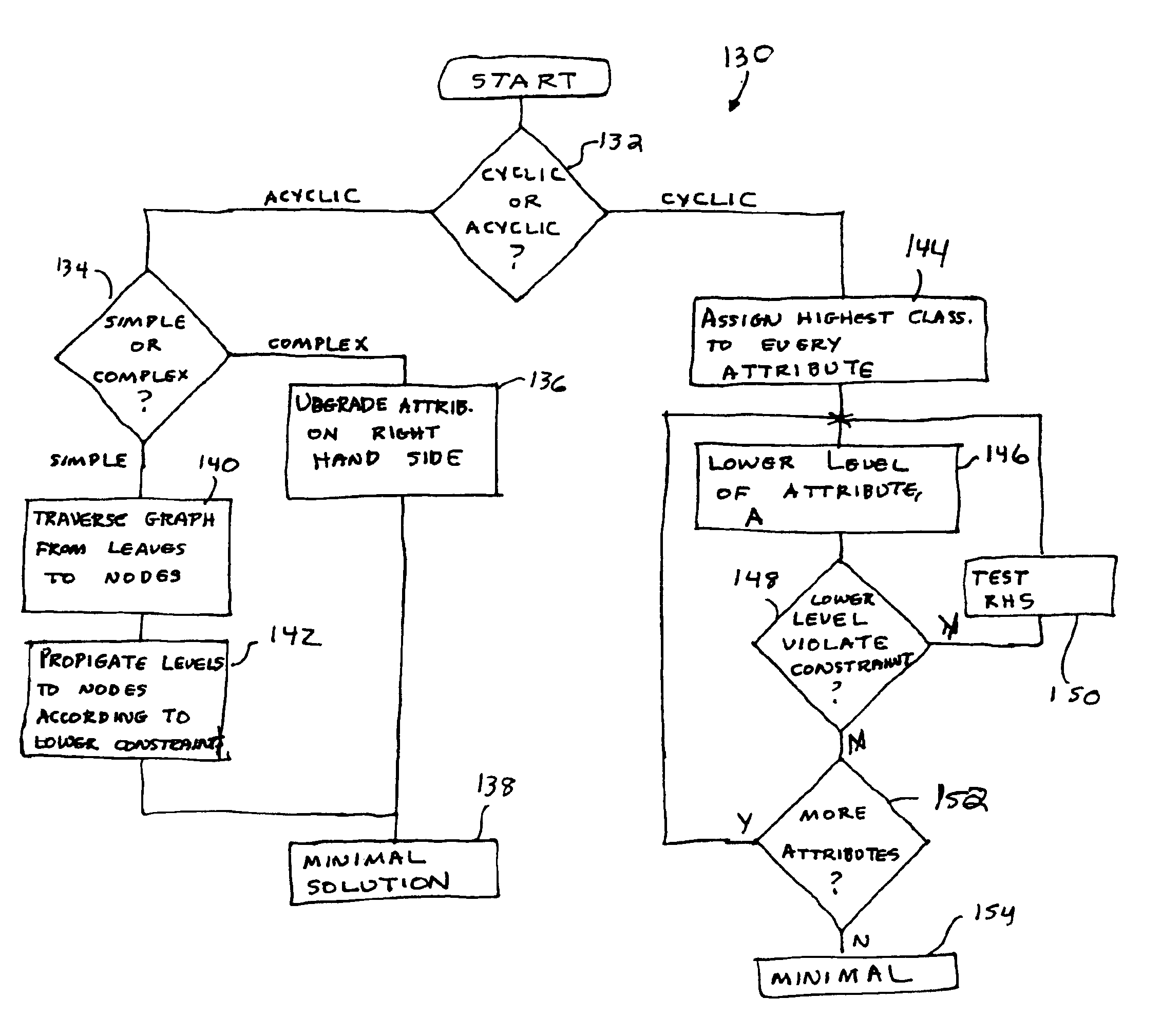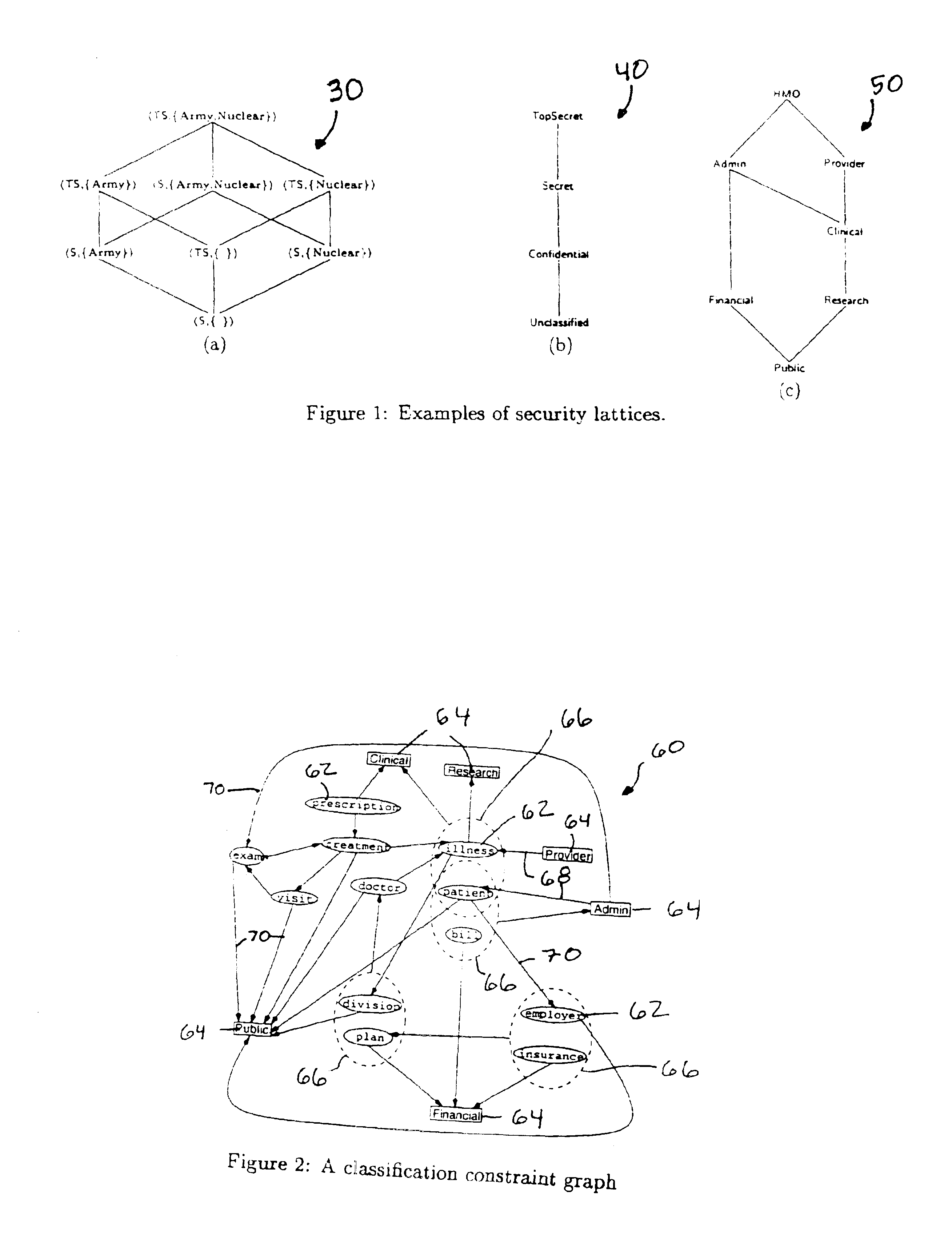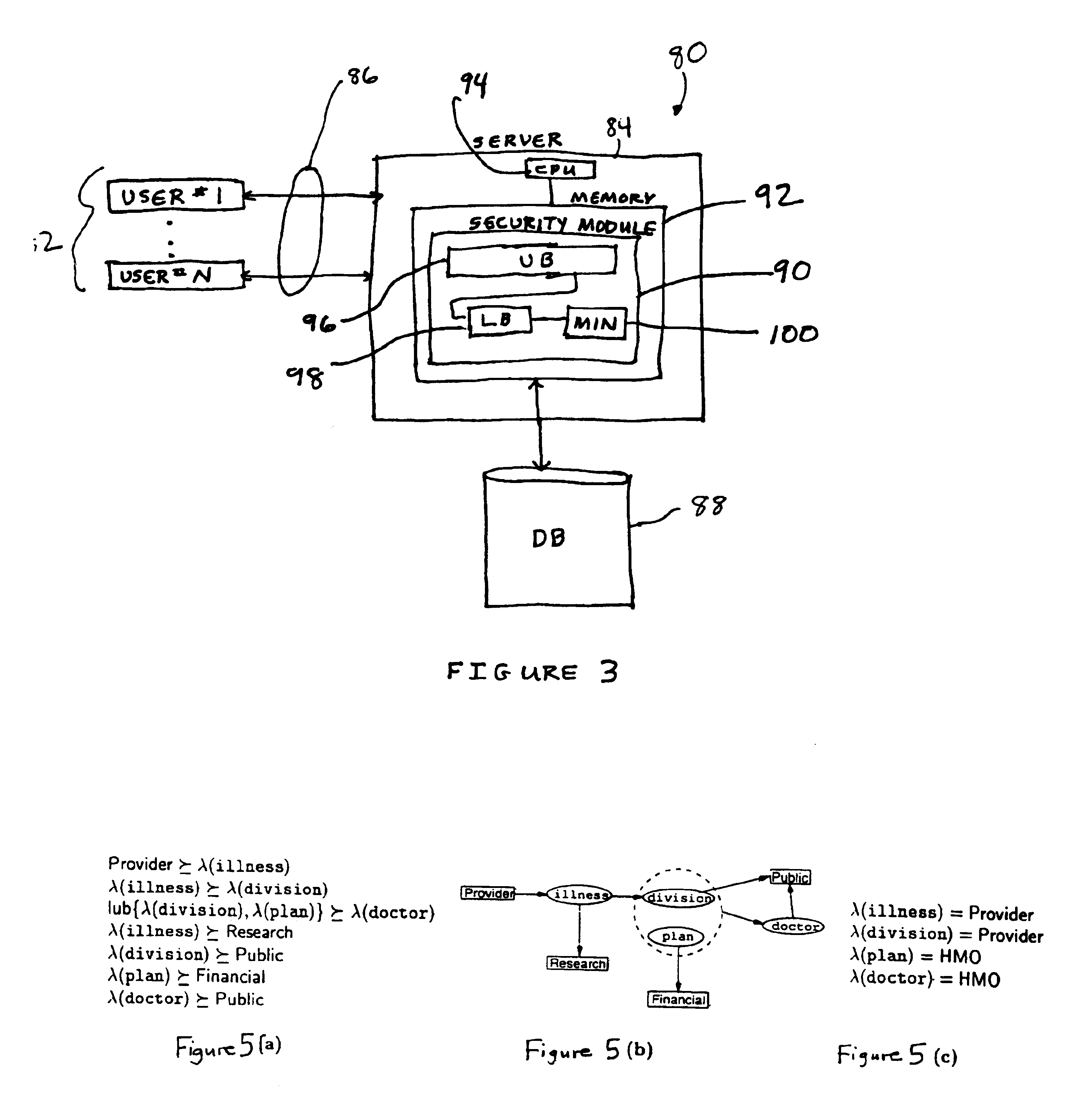Lattice-based security classification system and method
a technology of security classification and classification system, applied in the field of classification system and method of objects, can solve the problems of not supporting the classification of existing, possibly unclassified databases, and little, if any, support of the above-mentioned features, so as to reduce the overclassification of attributes, avoid overclassification of objects, and increase data availability
- Summary
- Abstract
- Description
- Claims
- Application Information
AI Technical Summary
Benefits of technology
Problems solved by technology
Method used
Image
Examples
case 1
In other words, at all times in compute_upper_bounds it is not possible to change the levels of any attributes to higher or incomparable levels without violating at least one constraint. We prove this property by induction, showing that if it holds before the modification of any λ(A), it also holds after the change. At the start of the procedure, λA=T for all attributes A, and the property trivially holds, since there is no mapping that A does not dominate. Now, there are two points in compute_upper_bounds at which attributes levels may be modified. The first is at the start of compute_upper_bounds itself, where each upper bound constraint is enforced, and the second is in the subprocedure upper_bound. In both cases, the modification results from a processing a constraint c of the form (lhs, A), where A□A, and the level assigned to A is the greatest lower bound (glb)of the level of lhs and λ(A). Let l denote the level of lhs under λ, and let 11′=1Πλ(A). Let λA′=λ except that A′(A)=1...
PUM
 Login to View More
Login to View More Abstract
Description
Claims
Application Information
 Login to View More
Login to View More - R&D
- Intellectual Property
- Life Sciences
- Materials
- Tech Scout
- Unparalleled Data Quality
- Higher Quality Content
- 60% Fewer Hallucinations
Browse by: Latest US Patents, China's latest patents, Technical Efficacy Thesaurus, Application Domain, Technology Topic, Popular Technical Reports.
© 2025 PatSnap. All rights reserved.Legal|Privacy policy|Modern Slavery Act Transparency Statement|Sitemap|About US| Contact US: help@patsnap.com



